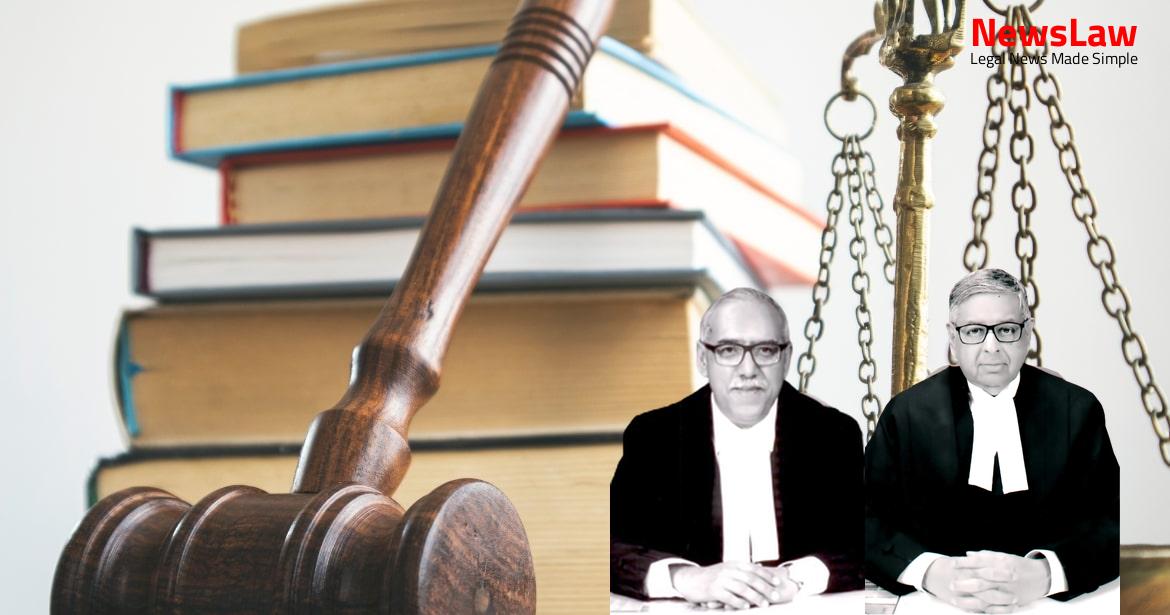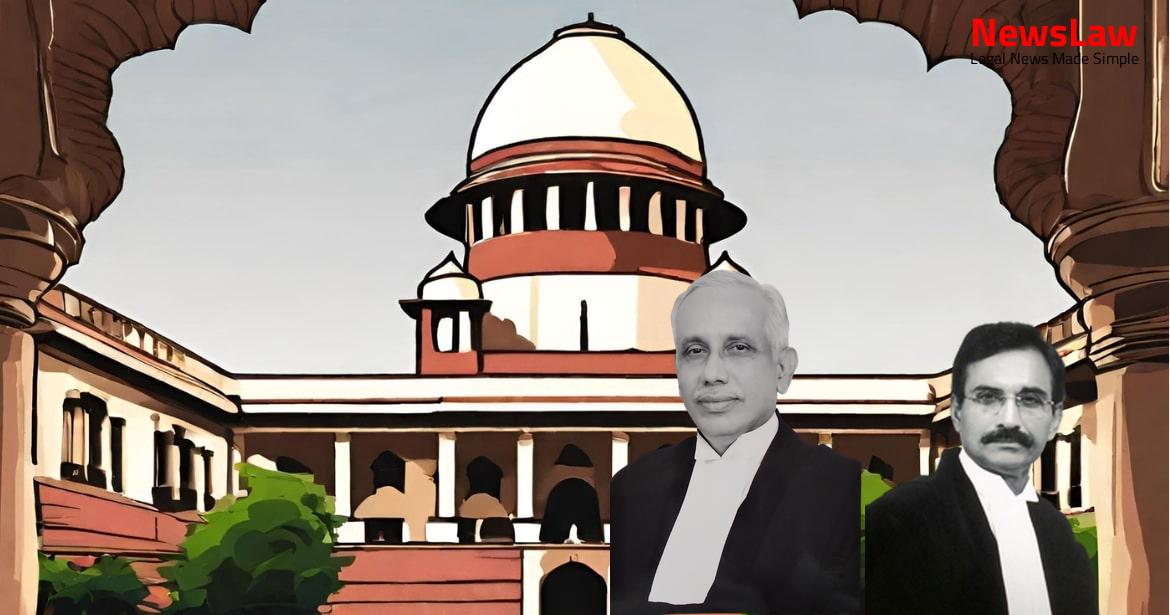In a significant ruling, the Supreme Court of India has upheld the judgment in the murder case of Ashok Rewani. The case involved the conviction of the accused based on eyewitness accounts and medical evidence. The High Court’s decision was confirmed, affirming the guilt of the perpetrators. This landmark judgment reinforces the importance of credible witness testimony and forensic evidence in delivering justice.
Facts
- Case initiated based on Fardbeyan of Nun Chand Rewani, recorded at Bokaro General Hospital by Sub-inspector Inderdeo Singh.
- Charge sheet submitted against both accused under sections 302/34 of the Code.
- Conviction based on eyewitness accounts of P.W.1 and P.W.3.
- Occurrence of offence at Mahuwar Chawk, within Harla police station in Bokaro, Jharkhand.
- Cause of death established as hemorrhage and shock from bullet injury.
- Post-mortem report corroborates eyewitness account and reveals fractured second rib.
- Accused persons’ response during examination under Section 313 was general denial.
- Charge framed against appellants for offence under specified sections.
- Five witnesses examined, including P.W.1, P.W.2, P.W.3, and Investigating Officer (P.W.4).
- Deceased victim having tea with witnesses when shot by appellant at close range.
- Instigation by deceased appellant, who was the father of the surviving appellant.
- Second shot fired by surviving appellant while escaping the scene.
- Appeal against deceased appellant has abated.
- The appellant was convicted under Section 302/109 of the Indian Penal Code.
- Both the appellant and the deceased appellant were sentenced to undergo imprisonment for life.
- The High Court of Jharkhand confirmed the judgment of the Trial Court and the order of sentence.
- The appellants were tried and convicted for the murder of Ashok Rewani on January 22, 1993.
- The surviving appellant was convicted under Section 302 of the Indian Penal Code.
Also Read: Enforcement of Foreign Award: Case of Oscar Investments Limited and RHC Holding Private Limited
Arguments
- Learned Counsel for the appellant argued on the inconclusive medical evidence linking the killing of the deceased victim with the bullet injury.
- The appellant’s defense of unidentifiability of the accused persons by the eyewitnesses was presented.
- The time of occurrence of the incident was at night, adding to the unidentifiability defense.
- Argument was made that the injury did not have the typical characteristic of close-range bullet firing.
- The appellant argued that the assailant must have been someone else due to a relationship-related dispute.
- It was pointed out that there was no evidence of a scuffle leading to a rib fracture, supporting the argument of false implication of the appellant.
- The relationship of the deceased victim with a girl from an indigenous tribe was suggested but not substantiated with evidence.
- The cause of death due to a gunshot injury was established by the post-mortem report and the testimony of the autopsy surgeon.
- The lack of charring on the body of the deceased was highlighted as evidence that the injury could not have come from close-range firing.
Also Read: NGOs Substantial Financing Case: Supreme Court’s Judgment on Public Authority Definition
Analysis
- P.W.1 and P.W.3 provided consistent evidence regarding their presence at the location during the occurrence.
- The High Court dismissed the argument of lack of visibility at night due to sufficient lighting in the city.
- Puncture injury was caused by a bullet, leading to fractured ribs of the deceased.
- The Doctor (P.W.5) confirmed that the injury was from a bullet fired from a firearm.
- The Trial Court and High Court correctly accepted eyewitness testimony supported by medical evidence.
- Injuries like laceration of heart, lung, and rib fractures indicated a young victim.
- No clear suggestion was given to challenge the Doctor’s findings.
- The width of a puncture injury is greater than its breadth and length.
- Alternative motives were suggested for the victim’s death related to his relationships.
- Post-mortem was conducted the day after the crime, allowing for digestion process evidence.
- Presence of digested food in the victim’s stomach did not disprove the time of occurrence based on credible witness testimony.
- It is important to consider that the process of digestion in normal, healthy individuals can persist for a substantial duration after death.
- Presence of nearby tea shops with lighting indicates visibility in the area.
- Strong credibility of eyewitnesses who remained consistent during cross-examination.
- Recovery of weapon or bullet not necessary to support prosecution’s case.
- High Court judgement should not be interfered with based on above reasons.
Also Read: Maintenance Rights of Divorced Women: Reconsideration Plea by Mr. Debal Banerjee
Decision
- Bail bonds cancelled, instructed to surrender within four weeks from today
- Failure to surrender will result in necessary steps for sentence
- Appeal dismissed, judgment of Trial Court upheld by High Court
- Appellant’s counsel informed the appellant is on bail
- Order to be sent to Trial Court
Case Title: PRABHASH KUMAR SINGH Vs. THE STATE OF BIHAR (NOW JHARKHAND)
Case Number: Crl.A. No.-000935-000935 / 2011



